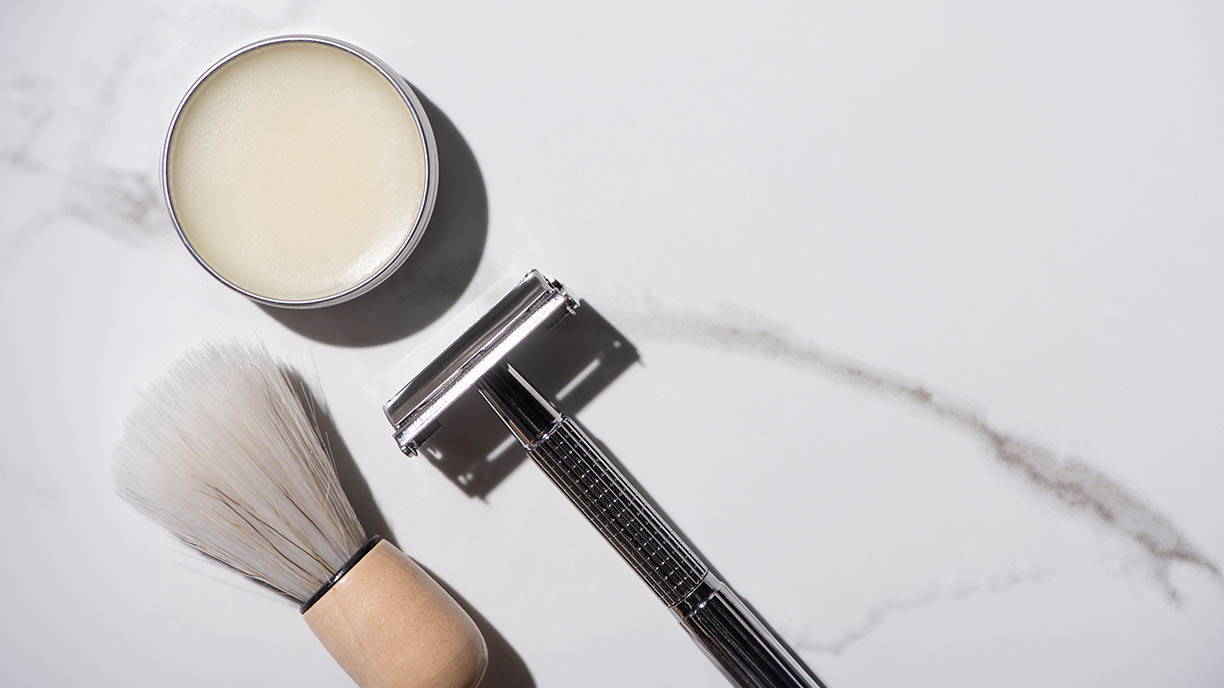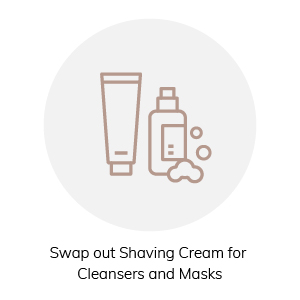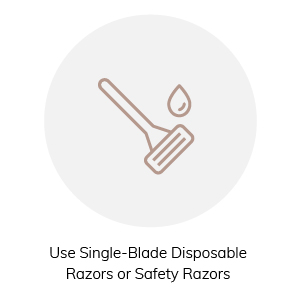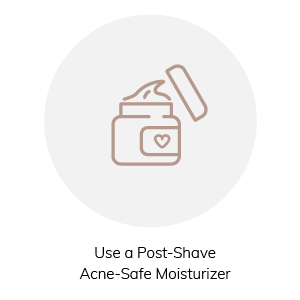
Shaving acne-prone skin can be painful and messy. Your skin is already feeling irritated and inflamed, and shaving the wrong way with the wrong tools can only make matters worse. In this lesson, we’ll address the proper tools, products, and techniques for shaving to avoid painful razor burns, razor bumps, and ingrown hairs. We’ll make shaving with acne as comfortable as possible for you in just three easy steps.



Step One: Picking the Right Shaving Products
Most shaving creams are not acne-safe and can contain harmful ingredients. This is especially true of canned shaving creams that contain isobutane/propane and preservatives that are irritating to the skin. We recommend that men use a gentle cleanser with a thick lather. Our favorite is Face Reality Ultra Gentle Cleanser.
For Men: Start by washing your face with your prescribed acne cleanser. Dispense a small amount of Ultra Gentle Cleanser in the palm of your dry hand, then rub your hands together briskly until you see a foam develop. Next, apply your cleanser with a small amount of warm water so that it creates a thick lather.
For Women: Try shaving with Seen Conditioner. This can be used on both the face and body, but we avoid avoiding shaving on areas where you have inflamed breakouts.
Step Two: Using the Right Razor to Avoid Breakouts
One of the most common mistakes many people make when shaving with acne is using a multi-blade razor. These razors give a close shave but at a cost to your skin. When using multi-blade razors, the first blades pull the skin taut and lift the hair out of the skin so that the subsequent blades can cut the hair below the skin line. This gives you that close shave feel. The skin then grows over the cut hair, forcing the hair to push through that skin as it grows out, leading to repeated irritation and red bumps.
Instead, use single blade disposable razors such as BIC Single Edge Razors, or use a safety razor. We prefer safety razors as they are heavier and thus take the pressure off your hands, letting the weight of the razor instead do the work. You will get less skin scrapping and a more efficient shave. Safety razors also produce less waste, making them a better choice for the environment.
For women or those with very little or soft fuzzy hair growth, we recommend using a single blade razor such as a Tinkle Razor (available on Amazon and some beauty supply stores). Shave dry skin in a downward motion. Do not shave upward; this will cause irritation and ingrown hairs.
When using your chosen razor, shave stubble slowly with short strokes that overlap. Avoid shaving upwards, against the grain, or shaving over the same spot more than once. An alternative to using a safety razor is to use a non-rotary electric shaver, such as a foil electric shaver, a T-edger, or clippers.
Keep your blades sharp! Dull blades will only irritate and nick your skin. If using disposable razors, use a new one every time. If using a safety razor, change your razor blades regularly. For inflamed acne, use each side of the safety razor once and then replace it with a new blade. Replace your clipper or T-edger blades every 3-4 months.
Step Three: Use a Post-Shave Moisturizer
Using a post-shave acne-safe moisturizer will hydrate and soothe your skin, reducing the likelihood of irritation. Face Reality Hydrabalance and Clearderma are perfect acne-safe options for post-shave use! If you’re not sure about the best product for moisturizing your sensitive skin, check with your acne specialist or look for the gray acne-safe badge on products from our website.
What To Do If You Get An Ingrown Hair
If you do get the occasional ingrown hair, it’s important to avoid tweezing or waxing them. Tweezing and waxing are not permanent hair removal methods. When these hairs start to regrow in two to three weeks, they get trapped in the curved hair follicle below the skin line. Those areas quickly become “hot spots” of chronic ingrown hairs, thickened skin, and scarring. So, resist the urge to get in that mirror to tweeze or pick.
If you see an ingrown hair that is visible on the surface, use a sterile needle to lift the hair gently and then snip it with clean cuticle scissors. Do not attempt to “dig out” deep ingrown hair.
Lesson 9 is all about what to do if you aren’t getting clear or if breakouts come back >>>